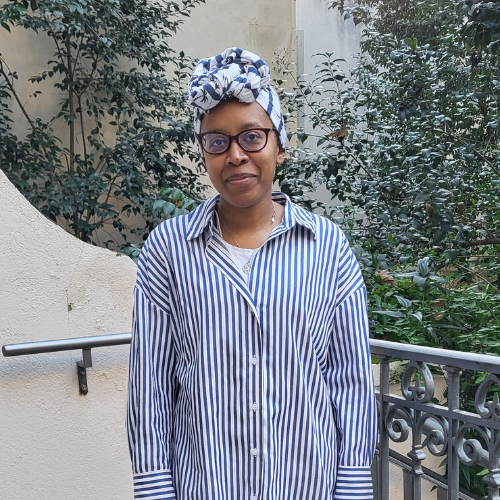Samira joins the Ventio team as a research scientist!

Samira,
You joined the Ventio team a few weeks ago as a research scientist. Welcome!
Can you introduce yourself in a few words and tell us more about your academic and professional background?
Trained as a physicist, I first took a Master’s degree in fundamental physics at Lyon 1 University, then a Master’s degree in medical imaging research at Paris-Saclay University. I specialized in the latter, and in particular in magnetic resonance imaging.
At the end of this second Master’s degree, I had the opportunity to do an internship in a research laboratory in Marseille specializing in advanced MRI techniques. At the end of this internship, I was offered funding for a thesis, which I then pursued as a young researcher.
Can you explain what your research projects have consisted of so far, and which technologies in particular you’ve been working on?
In September 2019 I defended my thesis entitled “Theoretical and experimental optimization of the inhomogeneous magnetization transfer (ihMT) imaging technique: Clinical application”.
These are obviously very technical terms, but in concrete terms I was working on MRI methods: I was developing approaches to improve the way we see the body in the machine, and more specifically the brain. This work on sequence and contrast is carried out using very specific machines, far beyond their usual performance.
On 1.5 Tesla and 3 Tesla machines, which are now the most widespread standards in healthcare establishments, I studied the degradation of neurons involved in multiple sclerosis (MS), focusing in particular on the assessment of myelin. It’s a fascinating field of research with very concrete applications.
Later on in my career as a young researcher, I worked on the spinal cord using various advanced methods. The spinal cord is an extremely complex structure to study, as it is particularly fine and in motion.
My work as a researcher has enabled me to acquire skills in MRI that now enable me to understand magnetic resonance imaging in its entire chain, from the theory behind it to its processing and analysis in order to extract clinically relevant information.
How did you hear about Ventio and why did you decide to apply?
I came across the job advertisement, which particularly appealed to me.
Joining Ventio is a great opportunity to apply my scientific skills in an innovative company. Driven by research and innovation, scientific and technical exploration is in the company’s DNA, enabling it to respond to current and future health issues.
Ventio relies on cutting-edge technologies such as artificial intelligence and digital solutions, and is fully conversant with the issues surrounding sensitive data. Ventio develops innovative tools tailored to the needs of the field. The aim is to aggregate technological innovations and transform them into concrete solutions.
What are you going to do at Ventio? In what areas will you be innovating?
My experience as a scientist, my position as a research engineer and my skills will be put to good use at Ventio, where I’ll be working on the Quantification of Magnetic Susceptibility (QSM) technology in various neurodegenerative pathologies.
I’ll be training in the advanced tools developed by Ventio and in this technique, which I’ve heard a lot about thanks to the numerous scientific publications it’s been the subject of.
Precisely quantifying iron deposition in the brain is an extremely important key to understanding research into neurodegenerative diseases.
Previously, I was looking at myelin, now I’m going to study another process: iron accumulation, which we know to be closely linked to neuronal death.
Better characterizing and monitoring neurodegenerative diseases is a real public health challenge. To meet the challenges posed by these diseases, we urgently need to transfer these new technologies into concrete applications for the benefit of patients.
One word to describe your state of mind at the start of your adventure with Ventio?
Curious and motivated!
